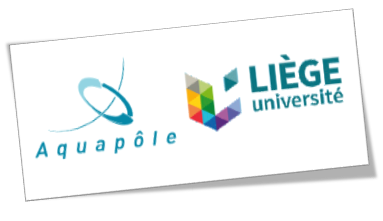|
Pegase Planing and Management of Water Treatment Pegase is a model for simulating water course quality. It is developed by PeGIRE laboratory of the University of Liege, member of the FOCUS unit of Research. Main Characteristics Pegase ("Planification Et Gestion de l'ASsainissement des Eaux" in French) is an integrated model watershed/river which allows calculating in a deterministic and forecasting way the quality of river water according to releases and pollution loads for non-stationnary and/or steady state hydrologic conditions. It is an operational tool that allows guiding the decisions of public and private operators in surface water management matters at watersched scale. Pegase is used by several european public administrations (figure 1) to help them meeting to the requirements of many European Framework Directive (WFD 2000/60/CE, …). A particular attention is paid by model developers to the evolutivity (continuous enhancements), the modularity of programs, and consideration of the needs and feedbacks of the users. The Pegase model is integrated in the software suite PegOpera.Motivations The management of water resources is a particularly complex problem showing multiple independant aspects. One of the major difficulties is obviously that the targeted goals are often contradictory and competitives. In this domain, the approach by mathematical modelling, based on System analysis techniques, is particularly adapted, if not mandatory: This kind of models allow the assessment of development projects impact and offer the advantage of giving the deciding or managing staff a tool to analyse the situation in terms of alternative solutions. Pegase has been built on the following motivations:
If the initial motivation was to provide a decision-making tool to competent authorities in the frame of the waste water treatment programs, the model has evolved to become an operational and pertinent model for the Integrated Water Ressource Management (IWRM) but also in the frame of the WFD. |
||||
|
Aquapole Quartier Polytech 1 Allée de la découverte, 11 4000 Liège BELGIQUE Access Map Google Map |
About the site
|
Rejoignez-nous :
|

|



